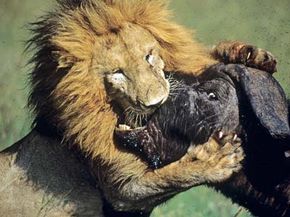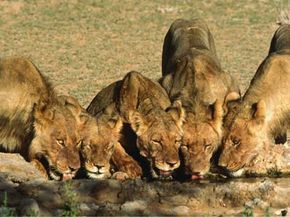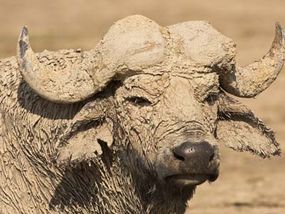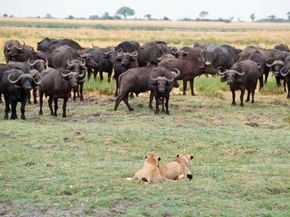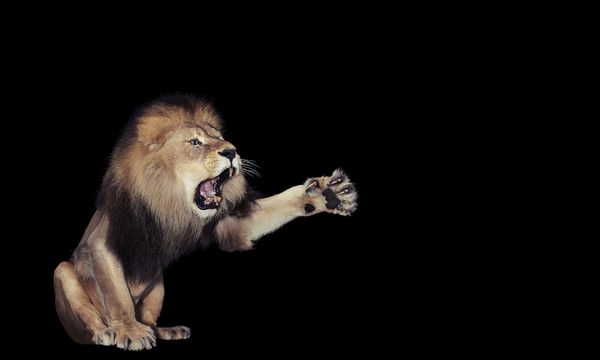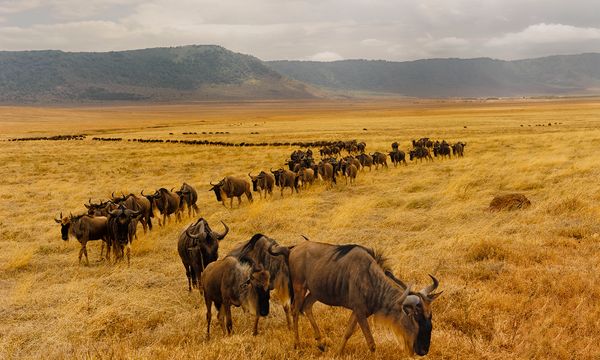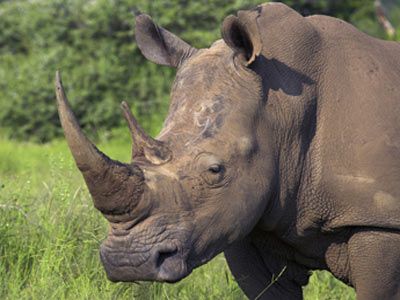Lions are nature's most formidable hunters on land. Over the course of a hunt, they work together, communicate and change strategies, positions and roles when needed. Armed with large, sharp teeth and claws and able to cover 100 yards (91.4 meters) in about six seconds, lions on the prowl for a meal most often end the hunt with a full stomach [source: San Diego Zoo].
Advertisement
There's plenty of good eating to be had if the pride can bag a 1,500-pound (680-kilogram) African buffalo. During long, dry African summers, lions get the opportunity to kill these mammoth beasts by waiting near scarce, life-sustaining pockets of water that buffalo must approach each day.
Female lions do the majority of the hunting, choosing a tactic depending on conditions. For instance, some lions flush out or separate buffalo from the herd, while others go in for the attack. These roles can switch from day to day, depending on which lions are going on the hunt, how large and fast each member of the hunting party is, and the number, size and strength of the herd they will attack.
Lions often wait out in the open near the water for buffalo to approach, but they also hide in the sierra's tall grasses to ambush the herd. Younger, smaller lions will often chase the herd to a central "kill zone," where larger, more experienced lions position themselves for the attack. They trip up buffalo by attacking the hind side or rear legs, and once the buffalo goes down, the others move in for the kill. While the buffalo is held down, one lion will place its entire mouth over the buffalo's snout to suffocate it. Another lion may also attempt to break the buffalo's neck or crush its windpipe. Before the buffalo is dead, the lions will have begun nibbling and tenderizing it, trying to work their way through the thick hide. A favorite point of entry is the anus, which they will graciously clean before ripping it open. Sometimes, young cubs, once they arrive on the scene, will crawl into the buffalo and eat it from the inside out.
In this article, we'll learn how an African buffalo defends itself from the lion. First, we'll learn a little more about these two combatants, either of which can turn from predator to prey, or vice versa, in the blink of an eye.
Advertisement
